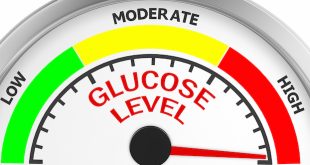The management of type 1 diabetes in older or elderly adults is generally very similar to that of the general type 1 diabetes population. (The term ‘elderly’ generally refers to people who are over 65 years of age.)
In fact, the Diabetes Canada clinical practice guidelines recommend that otherwise healthy elderly people with diabetes – whether they have type 1 or type 2 – should be treated to achieve the same blood sugar, blood pressure and cholesterol targets as younger people with diabetes.
However, there are some situations in which managing type 1 diabetes in older adults may differ.
Blood sugar targets in the elderly and ‘frail’ elderly
While blood sugar targets in most elderly people are the same as the general population, people who are elderly and frail have higher targets. Frail elderly people are described as those who suffer from three or more of the following conditions:
- Unintentional weight loss of more than 4.5 kilograms (10 pounds) in the past year
- Exhaustion
- Weakness
- Slow walking speed
- Low levels of physical activity
In these people, the A1C target is ≤8.5% (vs. <7.0% in the general population), and pre-meal (fasting) blood glucose levels should be 5.0 to 12.0 mmol/L (vs. 5.0 to 10.0 mmol/Lin the general population).
Hypoglycemia
Low blood sugar (hypoglycemia) is more common in elderly people with type 1 diabetes than their younger counterparts. As well, hypoglycemia unawareness (the inability to recognize a low blood sugar) is more common in elderly people, and is a major risk factor for falling. That’s why blood sugar targets are higher in some elderly people, as the prevention of hypoglycemia and hypoglycemia unawareness are considered to be more important than achieving strict glycemic targets.
Insulin therapies
The types of insulin therapies that are appropriate for elderly people depends on their age and overall health.
While premixed insulins are not often prescribed for people with type 1 diabetes, they are sometimes used in elderly people, as they have been shown in clinical studies to minimize dosing errors and improve glycemic control.
With respect to long-acting insulins, insulin detemir and insulin glargine are recommended for use in elderly people, instead of NPH or human 30/70 insulin, as they have been shown to reduce the frequency of hypoglycemic events.
Older adults with type 1 diabetes may require frequent adjustments in insulin dosing, especially during acute illnesses, to decrease the likelihood of dehydration, hypoglycemia and diabetic ketoacidosis.
So, while older or elderly adults with type 1 diabetes generally follow the same principles of diabetes management as younger people, the differences noted above are important to consider.
 Diabetes Care Community Learn, connect and care
Diabetes Care Community Learn, connect and care





